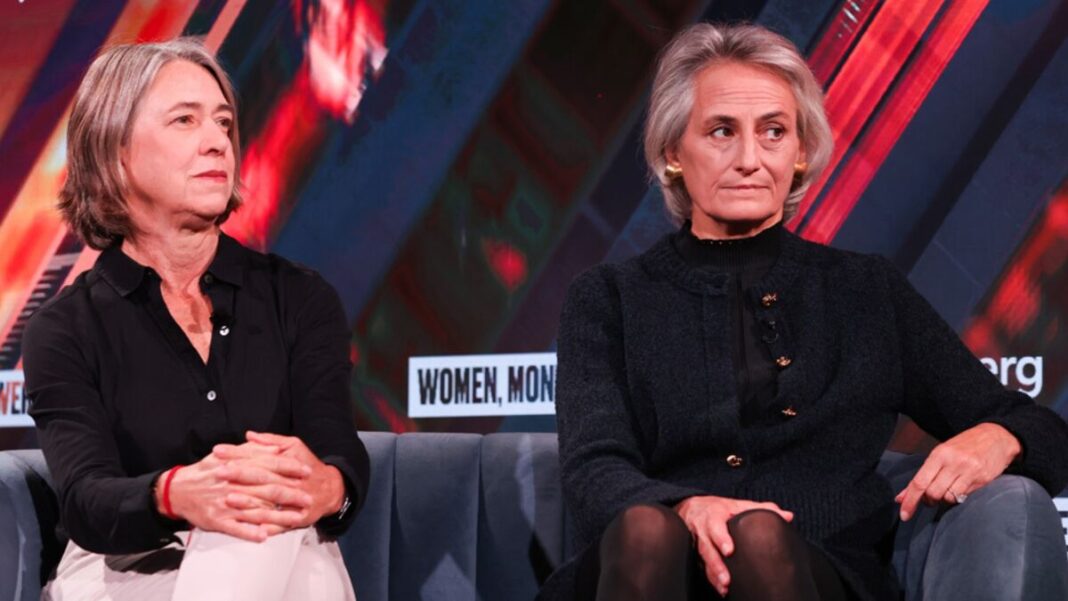Exploring Secondary Markets: A Conversation with Amy Falls and Jane Dietze
At Bloomberg’s Women, Money and Power summit in London, two influential leaders in the financial sector, Amy Falls, Chief Investment Officer (CIO) at Northwestern University, and Jane Dietze, CIO at Brown University, delved into the burgeoning potential of secondary markets for private assets. Their discussion illuminated the shifting landscape of institutional investment and highlighted strategies to harness liquidity, ultimately benefiting educational institutions and their endowments.
The Rise of Secondary Markets
Secondary markets refer to platforms where previously issued assets are bought and sold. In the context of private equity and venture capital, these markets have become increasingly important as liquidity concerns grow. Falls and Dietze noted that as institutional investors seek more flexibility and the ability to respond to market changes, secondary markets offer a compelling solution. They allow institutions to exit investments or adjust portfolios without being tied to the long-term commitments often associated with private assets.
Liquidity: A New Priority
The pair emphasized that liquidity is no longer just an afterthought; it’s a key priority. Traditionally, private assets have been illiquid, meaning they cannot be easily converted into cash. However, as investment strategies evolve, there is a noticeable shift towards prioritizing liquidity. Falls pointed out that this trend is a response to both market volatility and institutional needs for faster access to capital. By tapping into secondary markets, institutions can better manage their balance sheets and navigate uncertain economic climates.
Diversifying Investment Portfolios
Another focal point of the conversation was the importance of portfolio diversification. Dietze highlighted that engaging with secondary markets enables investment managers to address concentration risks more effectively. Instead of committing to long-term funds that may not align with changing financial landscapes, institutions can leverage the secondary market to reallocate assets according to current priorities. This flexibility allows universities to better fulfill their financial obligations while also seeking new opportunities that may arise.
The Role of Technology
Technology plays a pivotal role in facilitating access to secondary markets. Falls and Dietze discussed various digital platforms that streamline the buying and selling processes of private assets. These platforms not only increase transparency but also enhance market efficiency, making it easier for investors to connect with potential buyers or sellers. This technological shift has democratized access to previously opaque markets, enabling even smaller institutional investors to participate actively.
Strategic Insight for Institutional Investment
Falls and Dietze also addressed the importance of strategic insight when approaching secondary markets. They emphasized the need for rigorous due diligence and market analysis. While secondary markets can provide liquidity, they also come with risks that must be navigated carefully. Understanding the nuances of different asset types, market conditions, and investment horizons is crucial to making informed decisions that align with institutional goals.
Engaging with Emerging Trends
The conversation also touched on emerging trends within the private assets space. Both CIOs are keenly aware of the growing interest in impact investing and environmental, social, and governance (ESG) criteria. As investor preferences evolve, secondary markets are expected to become more reflective of these values. By engaging with these trends, institutions can not only bolster their financial positions but also align with broader societal goals.
Conclusion as a Future Focus Area
While Falls and Dietze didn’t specifically address future challenges, it’s clear that their dialogue indicates a forward-looking approach. They acknowledged that the landscape of private investment is continuously changing, necessitating adaptability and innovation. The insights they shared provide a roadmap for institutions aiming to effectively incorporate secondary markets into their investment strategies.
In summary, the discussions at the summit highlighted the importance of secondary markets for educational institutions navigating the complexities of private assets. With the combined expertise of Amy Falls and Jane Dietze, it’s evident that informed, strategic engagement in these markets can lead to more flexible and resilient investment portfolios.



